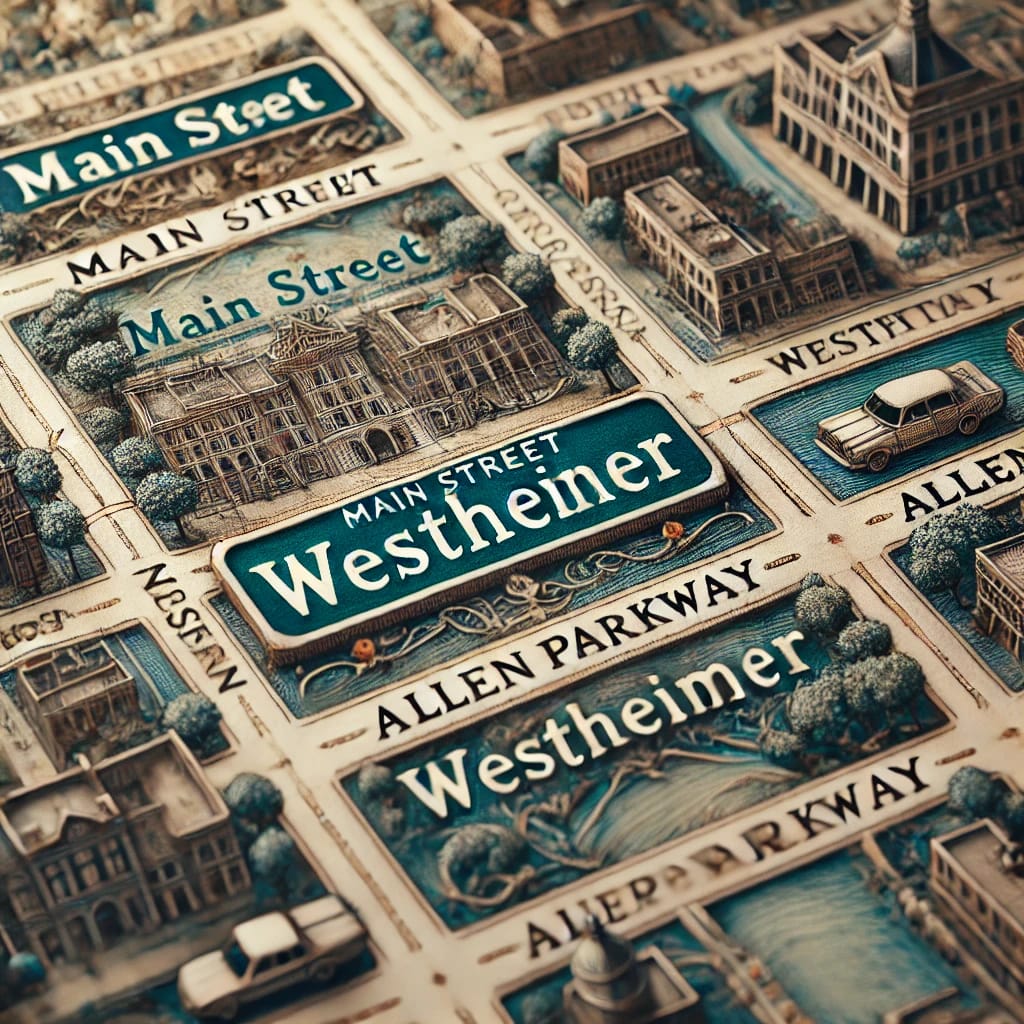
Every street name in Houston tells a story. Some reflect the city’s founders, while others capture its cultural evolution or pay tribute to notable events and people. By exploring the history behind these names, we can uncover the city’s journey from a fledgling settlement to a dynamic metropolis.
Allen Parkway: Honoring the Founders
Named after the Allen brothers – Augustus and John – Allen Parkway is a reminder of the city’s origins. The brothers purchased land along Buffalo Bayou in 1836 to found Houston. Their vision was to create a trade hub, and today Allen Parkway reflects the city’s continued importance in commerce and industry.
The road runs along Buffalo Bayou Park, blending urban life with nature. It’s more than a street – it’s a symbol of the city’s balance between progress and preservation.

Westheimer Road: A Legacy of Culture and Growth
Westheimer Road, one of Houston’s busiest thoroughfares, is named after Mitchell Louis Westheimer, a German immigrant who became a successful businessman and philanthropist. His contributions to the city’s development include early public transit systems and educational initiatives.
Today, Westheimer Road is synonymous with Houston’s cultural diversity. The street hosts art galleries, restaurants, and nightlife spots, reflecting the city’s vibrant and evolving cultural landscape.

Navigation Boulevard: A Glimpse into Houston’s Immigrant Past
Navigation Boulevard runs through the heart of Houston’s East End, home to many Hispanic and immigrant communities. This area grew with waves of Mexican immigrants who arrived in the early 20th century to work in Houston’s booming industries.
Navigation Boulevard leads to The Original Ninfa’s, a landmark restaurant credited with popularizing Tex-Mex cuisine. The street is also the site of the popular East End Street Fest, celebrating the cultural contributions of Houston’s Hispanic community.

Montrose Boulevard: The Hub of Art and Individuality
Montrose Boulevard runs through one of Houston’s most eclectic neighborhoods. The area has long been a haven for artists, musicians, and members of the LGBTQ community. Montrose’s reputation as a cultural hub grew in the 1970s, and it remains a center for creativity today.
The boulevard hosts numerous festivals and parades, including the Houston Pride Parade, reinforcing Montrose’s identity as a welcoming and inclusive space.

Bissonnet Street: A Path Through the Arts
Bissonnet Street cuts through Houston’s Museum District, connecting the city to its artistic and intellectual roots. The street’s name honors J.J. Bissonnet, a landowner who played a role in developing the area in the early 20th century.
Today, Bissonnet Street is home to several world-class museums, including the Museum of Fine Arts, Houston and the Contemporary Arts Museum, underscoring the city’s commitment to arts and education.

Main Street: The Heart of Houston
Main Street is one of Houston’s oldest and most important roads. Running through downtown, it has long been the center of business and commerce. Early 20th-century streetcars ran along Main Street, shaping the development of Houston’s urban core.
Today, Main Street reflects the city’s evolution. Skyscrapers, restaurants, and public spaces line the road, making it a gathering place for residents and tourists alike.

The Significance of Street Names in Houston’s Identity
Houston’s street names are more than just labels on a map – they serve as landmarks in the city’s cultural, economic, and social journey. They reflect the people and events that have shaped Houston’s identity, offering a way for residents to connect with their past.
These names also reflect the city’s diversity, with streets named after immigrants, local heroes, and historical events. By learning the stories behind them, we gain insight into the values and aspirations that built Houston.